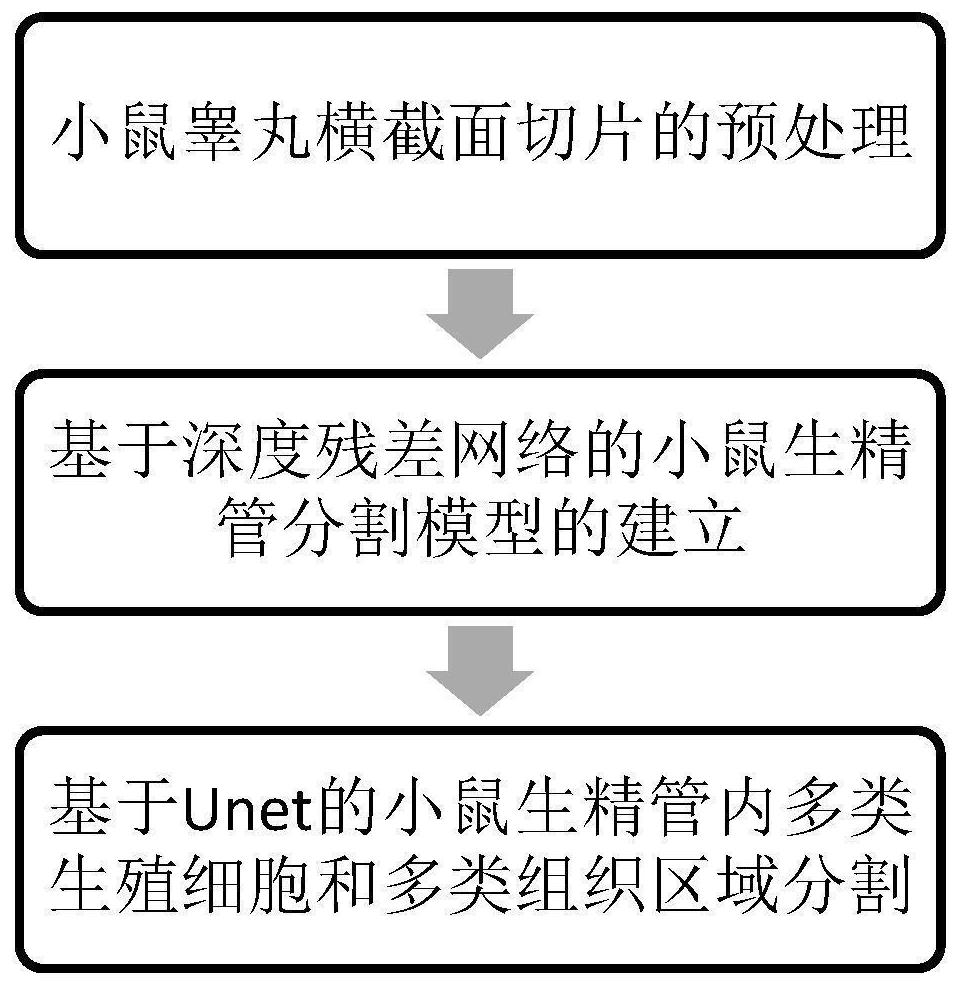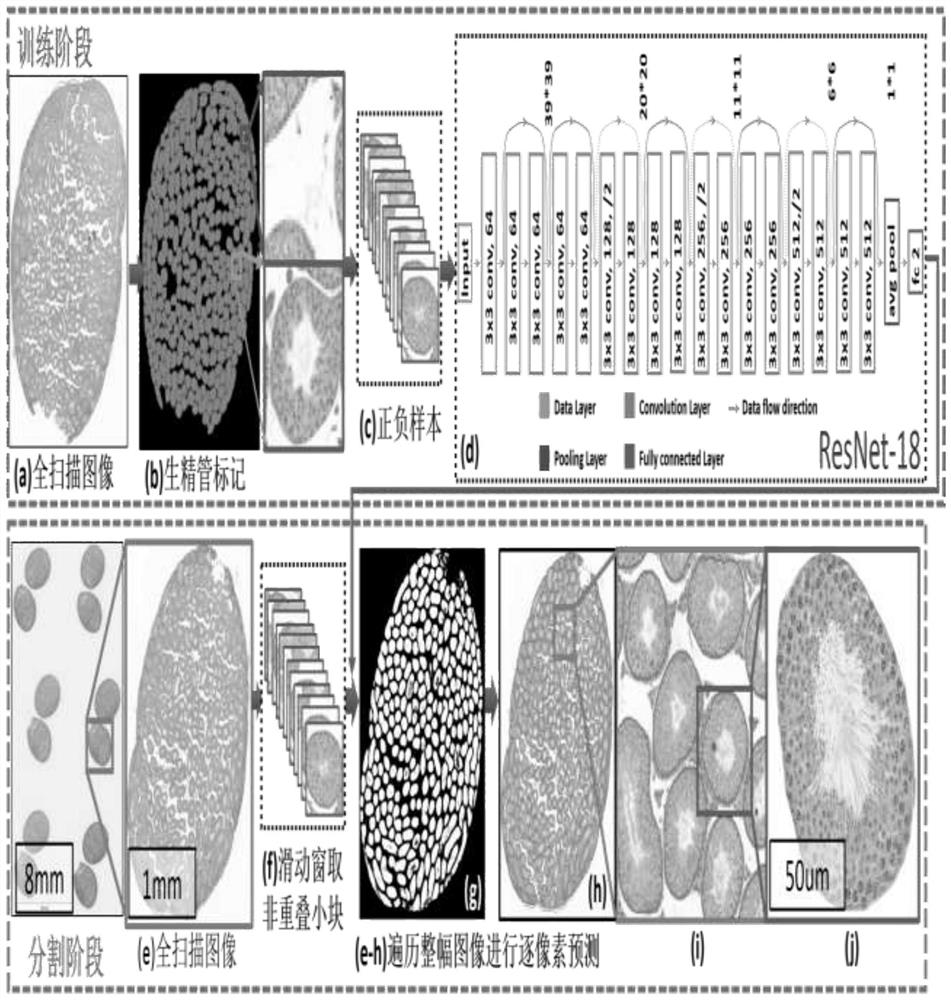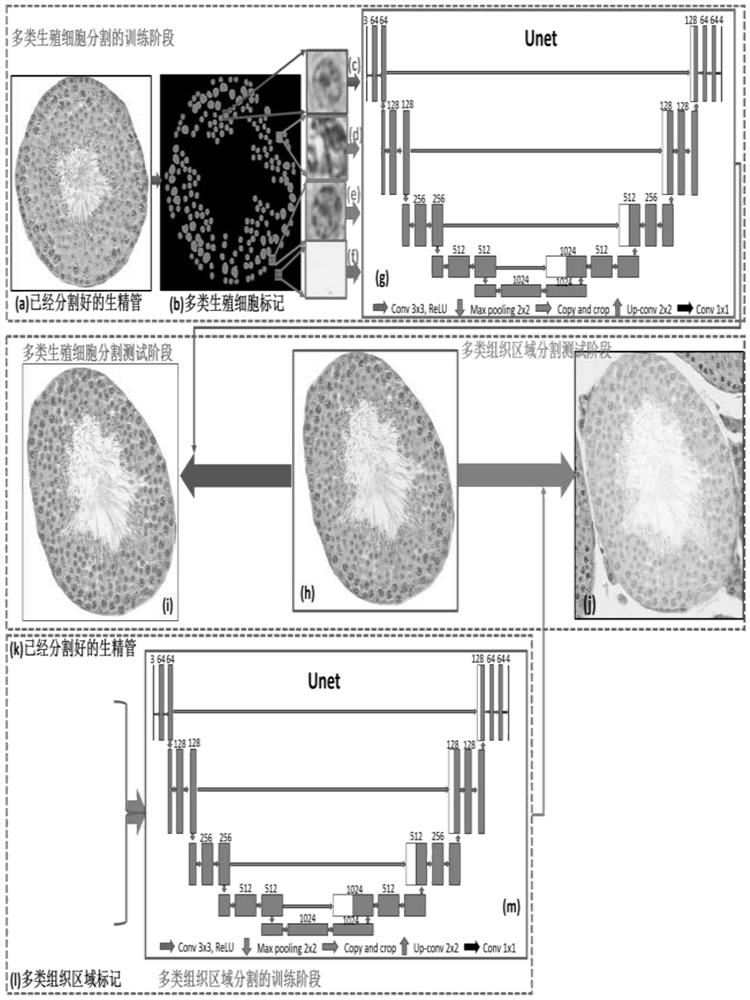Automatic segmentation method for various tissues in mouse testis pathological section based on deep learning
A technology of pathological slices and deep learning, applied in neural learning methods, image analysis, image data processing, etc.
- Summary
- Abstract
- Description
- Claims
- Application Information
AI Technical Summary
Problems solved by technology
Method used
Image
Examples
specific Embodiment
[0052] 1. First, color-label all the pathological images of the mouse testis cross-section;
[0053] 2. Then, scale a full scan image of a mouse testis cross section to 1 / 400 of the original size (the length and width are reduced by 20 times), and then send it to the deep convolutional neural network for pixel-by-pixel segmentation to obtain the mouse Pre-segmentation results of seminiferous tubules. Use bilinear interpolation to map the segmentation result to the size of the original image;
[0054] 3. In the staging of seminiferous ducts in mice, stages VII-VIII are the two consecutive stages that are most difficult for pathologists to distinguish, so it is planned to initially analyze the images of stages VII-VIII that are most difficult to distinguish; The seminiferous tubules sorted out in the first stage were extracted, and Unet was used to perform multi-type germ cell segmentation and multi-type tissue region segmentation.
PUM
 Login to View More
Login to View More Abstract
Description
Claims
Application Information
 Login to View More
Login to View More - R&D
- Intellectual Property
- Life Sciences
- Materials
- Tech Scout
- Unparalleled Data Quality
- Higher Quality Content
- 60% Fewer Hallucinations
Browse by: Latest US Patents, China's latest patents, Technical Efficacy Thesaurus, Application Domain, Technology Topic, Popular Technical Reports.
© 2025 PatSnap. All rights reserved.Legal|Privacy policy|Modern Slavery Act Transparency Statement|Sitemap|About US| Contact US: help@patsnap.com



